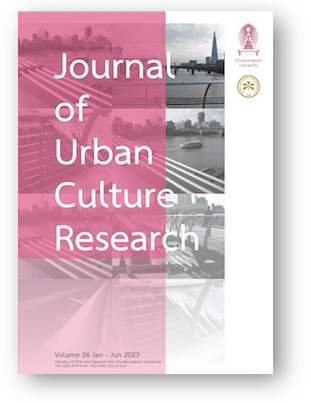Cemetery Kampung, Identity, Spatial Characteristics, Urban Interaction, Indonesia
DOI:
https://doi.org/10.14456/jucr.2023.15Keywords:
Cemetery Kampung; Identity; Spatial Characteristics; Urban Interaction; IndonesiaAbstract
This research discusses the spatial characteristics of urban kampung (village) interaction with a cemetery by investigating the physical, social and economic effects. The snowball approach was employed to collect data from 16 key informants such as community leaders, cemetery caretakers, visitors at the Bergota Public Cemetery (BPC) and traders in the Bukit Bergota area. Primary data consisted of field notes, in-depth interviews with secondary data being historical documents of the area, government and community-based documents. Using case study research design, the study was carried out by categorizing kampungs into three different zones as analytical units to reflect its character as well as identify spatial, social and economic interactions. The areas background was gleaned from historical references and publicly available digital documents. There are three main characteristics of cemetery kampung: It is fluid space for the kampung with a memorial identity on a foundation of the economics of cemetery activities. These characteristic generate a particular and significant urban scale identity. Its distinctiveness of place identity strengthens the kampung's role. Its place identity are embodied in its landscape, history, traditional characteristics and demand for related services. The unique interaction between cemetery and kampungs can be used by urban practitioners, local governments and academics as guidelines for improved understanding of issues related to local identity and provide a better quality of life in these neighborhoods.
Downloads
Published
Versions
- 2023-07-17 (2)
- 2023-06-27 (1)
How to Cite
Issue
Section
License

This work is licensed under a Creative Commons Attribution-NonCommercial-NoDerivatives 4.0 International License.
Authors authorize the JUCR to publish their materials both in print and online while retaining their full individual copyright. The copyright of JUCR volumes is retained by Chulalongkorn University.
The views and opinions expressed herein are those of the individual author(s) and do not necessarily reflect the policies or opinions of the Journal (JUCR), it editors and staff, Chulalongkorn University, or Osaka Metropolitan University.







